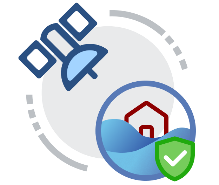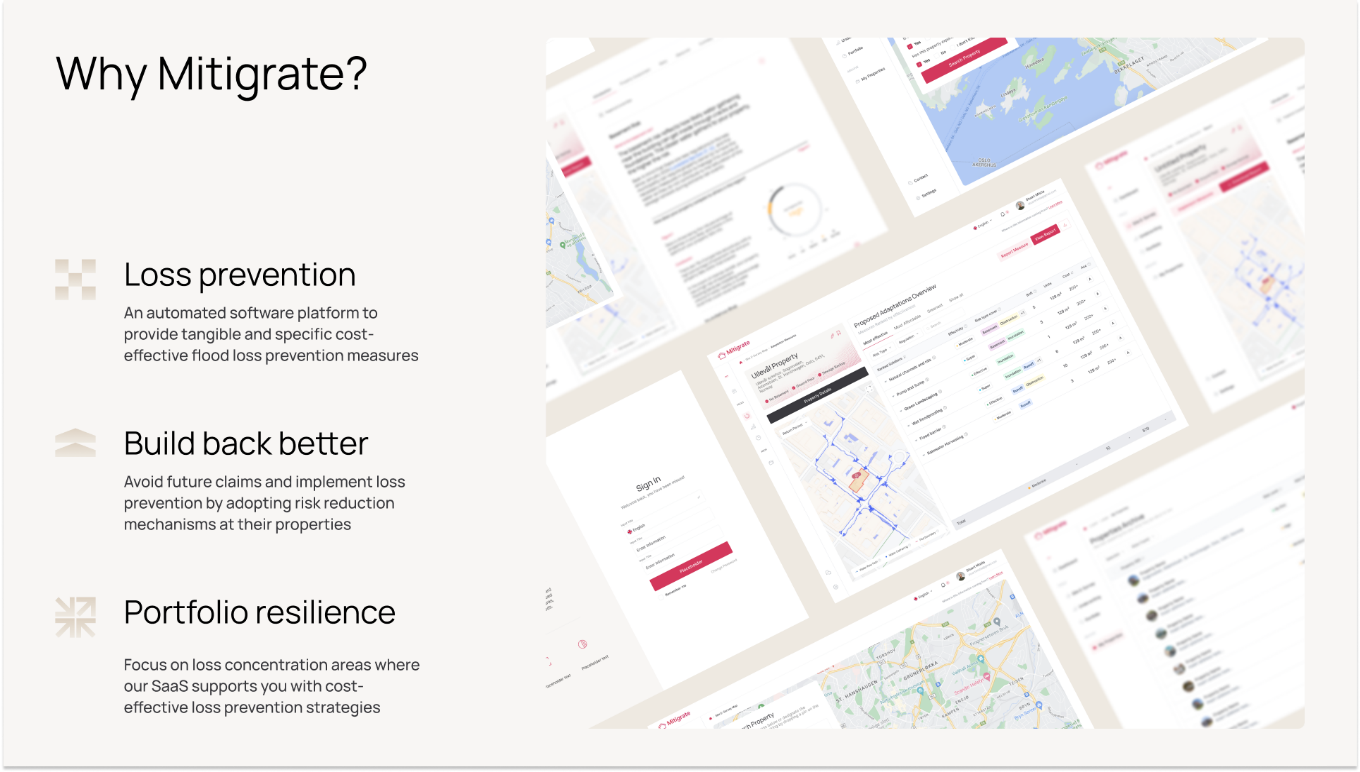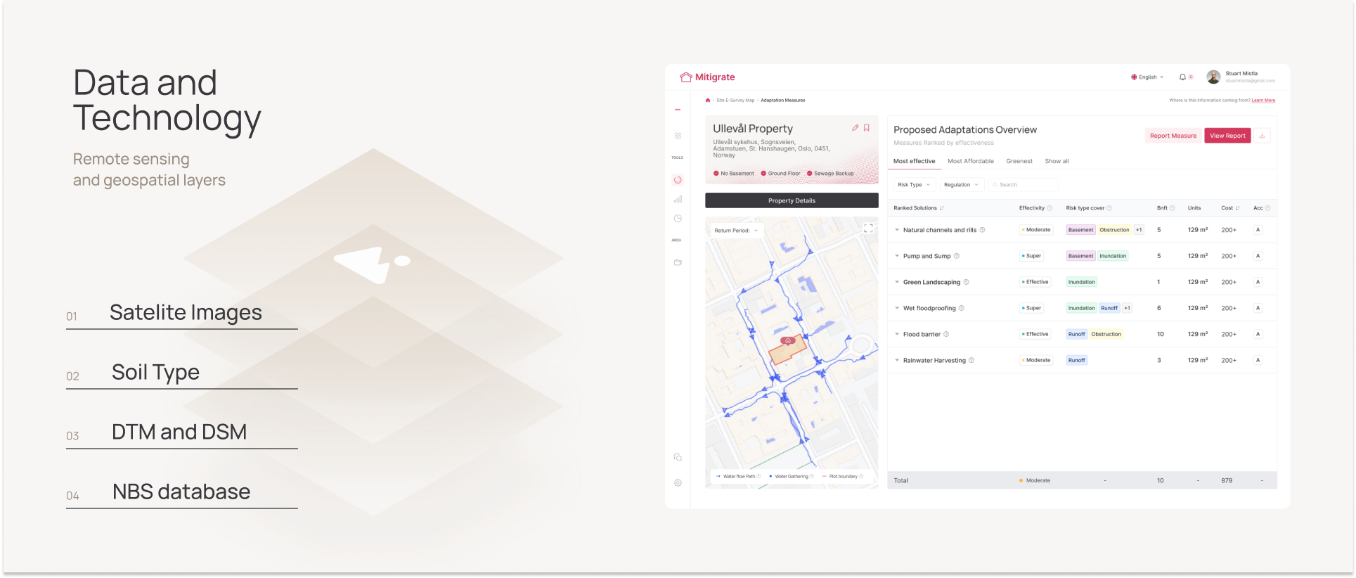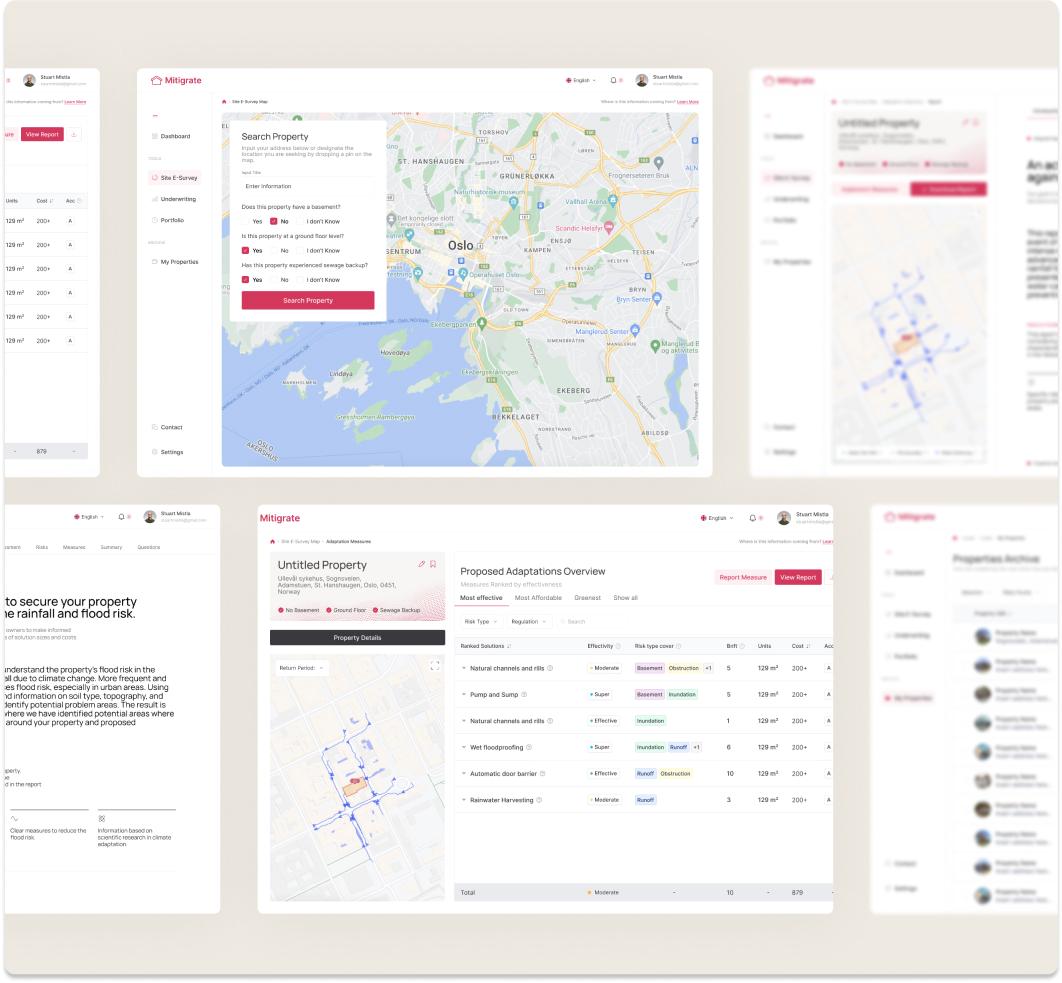
Objectives of the service

Mitigrate's service tackles the pressing challenges confronting insurance companies and policyholders amidst rising flood-related losses. The primary objectives encompass the spatially informed implementation of Nature-Based Solutions (NBS), sensitivity analysis on satellite image resolutions, and assessing risk reduction. By leveraging space-based technology and digital twins, Mitigrate strategically applies NBS, reducing the need for building repairs. The service navigates spatial resolution challenges, exploring machine learning for coherent results with lower-quality satellite imagery.
Mitigrate's solution not only addresses financial and insurability issues but aligns with EU taxonomy sustainability goals. It offers tailored flood prevention recommendations, significantly lowering annual average losses, positively impacting key insurance metrics, and boosting customer satisfaction, retention, and Lifetime Value (LTV). The service promotes a sustainable business model by fostering resilient communities. In essence, Mitigrate's offering transforms the insurance landscape, mitigating losses, enhancing sustainability, and ensuring resilience for the future.
Users and their needs
Mitigrate’s primary emphasis lies within the general insurer category, spanning underwriters, claims handlers, risk management teams, re-insurance purchasing professionals, and sustainability teams. These key stakeholders play pivotal roles in encouraging policyholders to implement effective flood prevention measures. The overarching goal is to mitigate the financial impact of claims, minimize rebuilding expenses, and contribute to environmental sustainability. This strategic focus aligns with the EU taxonomy standards.
Building robust connections with major insurance companies in Norway has been a cornerstone of the team’s efforts, fostering collaboration and understanding within the local insurance landscape. Additionally, company’s network extends globally, with established contacts and engagements in Germany, Japan, and the United States.
User needs can be summarized in 3 main categories:
-
Access to loss prevention measures, cost and visualization
-
Risk reduction visualization and investment analysis
-
Portfolio risk assessment and sustainability integration
Service/ system concept
Mitigrate system eliminates the necessity for on-site visits for recommending flood risk reduction measures. By using diverse data sources, including high-resolution geospatial, satellite data, alongside advanced technologies like machine learning, and Nature Based Solutions database, Mitigrate’s system provides insurance companies with a powerful tool. Mitigrate offers a holistic approach that goes beyond risk assessment by recommending specific measures and nature-based solutions (NBS) for each property to mitigate flood damage in a cost-effective way. This sophisticated system allows Mitigrate SaaS to recommend tailor-made solutions with precision, factoring in relevant size, location, and implementation costs for individual properties. Furthermore, the service enables insurance companies to align themselves with the EU taxonomy and sustainability goals. By actively promoting the use of NBS for reduction of damage insurance companies can demonstrate their commitment to environmental responsibility and contribute to a greener future.

Space Added Value
Earth observation data provide extensive coverage, enabling the analysis and monitoring of large-scale phenomena. This data offers scalability and transferability, allowing for efficient flood risk management across different regions, thereby saving time and resources. Regular updates ensure that the information remains timely and current, making Earth observation data an integral part of the service.
Our analysis workflow leverages Digital Terrain Model (DTM) and Digital Surface Model (DSM) data for spatial analysis, taking into account terrain characteristics and surface details to accurately simulate floods. Satellite images, supplemented by DSM data, are used to create Land Use/Land Cover (LULC) maps, providing insights into land cover types. Soil type maps are integrated with other relevant data, including LULC, slope maps derived from DTM, and soil depth maps, to determine optimal locations for implementing Nature-Based Solutions (NBS). By combining these diverse data sources and employing advanced techniques, we enhance flood risk assessment, land cover mapping, and the identification of effective adaptation strategies, thereby minimizing risk and maximizing effectiveness.
Current Status

At the beginning of this project and after participating in Lloyd's of London accelerator program, Mitigrate connected with 20 different insurers, gathering invaluable feedback on their needs and requirements. This has enhanced our understanding of the use cases, allowing us to continually refine our product. Our system can now analyse individual addresses, assess flood risk based on our flood model, and determine the risk level for each building. Utilizing multiple geospatial datasets and satellite images, it recommends tailored Nature-Based Solutions (NBS) to mitigate these risks. These solutions are specifically selected to meet the unique needs of each property, ensuring effective and customized risk reduction.



